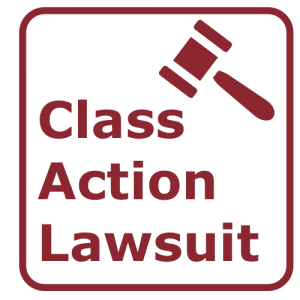Exploring the Assertio Class Action Lawsuit: Your Comprehensive Guide
Demystifying Course Action Lawsuits: A Closer Consider Lawful Proceedings
Course action claims can be complex and intimidating, often shrouded in a shroud of mystery for those strange with the legal proceedings entailed. Nevertheless, gaining a much deeper understanding of these lawsuits is critical, as they act as a powerful device for individuals to seek justice and hold firms responsible. In this discussion, we will certainly debunk class activity suits, taking a more detailed take a look at the numerous aspects of the legal process. From understanding the requirements for class activity eligibility to the function of course representatives, and from the process of course qualification to the resolution of these suits, we will certainly untangle the details and clarified the internal operations of this legal mechanism. Let's dive into the globe of class activity legal actions and uncover the ins and outs that exist under the surface.
Comprehending Class Action Lawsuits
Understanding Course Activity Legal action calls for a detailed examination of the legal process involved in cumulative lawsuits. Class action lawsuits are a kind of lawsuit where a team of individuals with similar cases or complaints collaborate to initiate a legal action versus a typical defendant. This type of litigation allows people with restricted resources to jointly seek justice, as it combines the toughness of several individual cases into a single lawsuit.
The process starts with the identification of a lead plaintiff or course agent who files the first problem in behalf of the whole class. The court after that figures out whether the case fulfills the demands for course accreditation, that include commonness, numerosity, typicality, and adequacy of depiction. If certified, the court notifies potential course members, giving them an opportunity to opt-out if they desire to pursue their insurance claims individually.
Once the class is certified, the lawsuits proceeds through numerous stages, consisting of discovery, motion method, and, if necessary, test. The result of the suit can cause a negotiation or a judgment, which is binding on all course participants unless they select to opt-out. Class action legal actions can include a variety of legal problems, such as customer protection, protections fraud, work discrimination, and ecological harm.
Comprehending the nuances of course activity lawsuits is critical for both offenders and complainants associated with collective lawsuits. It calls for a detailed understanding of the legal demands for qualification, the civil liberties and obligations of class members, and the prospective advantages and threats connected with going after or safeguarding against class action insurance claims.
Identifying Class Action Qualification
To figure out whether a lawsuit certifies as a class activity claim, details standards have to be met. These criteria are designed to make certain that the case can properly represent the interests of a large group of individuals that have actually endured comparable damage or have actually been influenced by the very same concern. The vital consider recognizing course action eligibility is the presence of an usual question or issue that influences all possible course members.
Firstly, a class activity claim needs numerosity, which implies there must be a considerable number of potential course participants involved. This ensures that a course activity is an efficient means to settle the cases of a huge group of individuals, as opposed to having each individual file a specific claim.
Secondly, there have to be commonness among the claims of the possible course members. This suggests that there should be a common inquiry of legislation or reality that is central to the case. If each potential class participant's insurance claim is special and unconnected to the others, a course action may not be appropriate.

The Function of Class Representatives
Class reps play a vital function in class activity claims by representing the rate of interests of the whole course. These people are chosen from within the class to function as the general public face of the lawsuit and are accountable for making choices in behalf of all course participants. The duty of class representatives includes different duties and duties throughout the legal proceedings.
One of the main obligations of course reps is to give information and assistance to their fellow class members. They work as a point of contact and communication between the class members and the attorneys representing them. This includes keeping the class members informed around important updates, addressing their inquiries, and dealing with any type of problems they may have.
Course agents likewise have the responsibility to actively take part in the lawsuits process (BioVie class action lawsuit). This includes working very closely with the attorneys to develop lawful strategies, gathering evidence, and giving statement if necessary. They need to be actively entailed in all elements of the case to make certain that the very best interests of the whole class are stood for
Moreover, class reps are responsible for continue reading this approving settlements or various other resolutions gotten to in the legal action. They need to very carefully evaluate the terms of the settlement and choose that remains in the most effective rate of interest of the whole class. This decision-making process needs cautious consideration and appointment with the course members.
The Refine of Class Accreditation
The process of certifying a course in a class activity legal action involves a detailed assessment of specific requirements to identify if the case satisfies the essential needs for class accreditation. Course accreditation is a critical action in the lawsuits procedure as it figures out whether a lawsuit can continue as a course action, enabling a large team of individuals with comparable claims to be stood for jointly click to find out more by one or a few individuals.
To get course accreditation, the plaintiff needs to show that the suggested class satisfies particular prerequisites. These prerequisites generally include numerosity, commonness, typicality, and adequacy of depiction. Numerosity needs that the course is so big that joinder of all participants is unwise. Commonality requires that there are questions of law or truth usual to the class members. Typicality needs that the insurance claims or defenses of the class representatives are regular of those of the course. Competence of representation makes sure that the class agents will relatively and adequately safeguard the rate of interests of the course.
If the recommended course fulfills the required requirements,The court will certainly scrutinize these requirements and the plaintiff's proof to figure out. The court may additionally think about other variables, such as whether a class action is the remarkable approach to fix the disagreement and whether the course is sufficiently cohesive.

As soon as the court grants course accreditation, the these details legal action can proceed as a class action, permitting the plaintiffs to collectively seek alleviation and possibly obtain a judgment or negotiation that benefits the entire course.
Solving Course Action Claims
When class qualification has been given, the following action in fixing a class action legal action is to browse the procedure of lawsuits or negotiation negotiations. Litigation refers to the legal process in court, where the plaintiff's lawyer presents evidence and disagreements to support their insurance claims, and the offender's lawyer counters with their own proof and arguments. This procedure can include numerous stages, such as pretrial motions, exploration, and trial.
On the other hand, negotiation negotiations involve discussions in between the celebrations to get to an equally appropriate resolution without going to trial. Negotiation uses may be made at any type of stage of the litigation procedure, and if both parties agree, a negotiation contract is gotten to.
Conclusion
Finally, class action claims play an essential duty in providing justice and payment to big teams of people that have been hurt by the exact same entity. By accrediting a course and appointing course reps, the legal process becomes extra reliable and easily accessible for the plaintiffs. Managing these lawsuits can be a facility and extensive process, however it is essential in holding companies liable for their actions and ensuring fair outcomes for all affected parties.
From recognizing the standards for course activity eligibility to the function of course representatives, and from the procedure of course qualification to the resolution of these suits, we will certainly unwind the complexities and shed light on the internal functions of this legal mechanism. The key variable in determining course activity eligibility is the visibility of a typical question or issue that influences all potential class participants.
If each potential course member's case is unassociated and one-of-a-kind to the others, a class activity might not be ideal.
Class reps play a vital duty in class activity suits by standing for the rate of interests of the entire class.Once class accreditation has actually been provided, the next action in settling a course activity legal action is to navigate the procedure of lawsuits or negotiation negotiations.